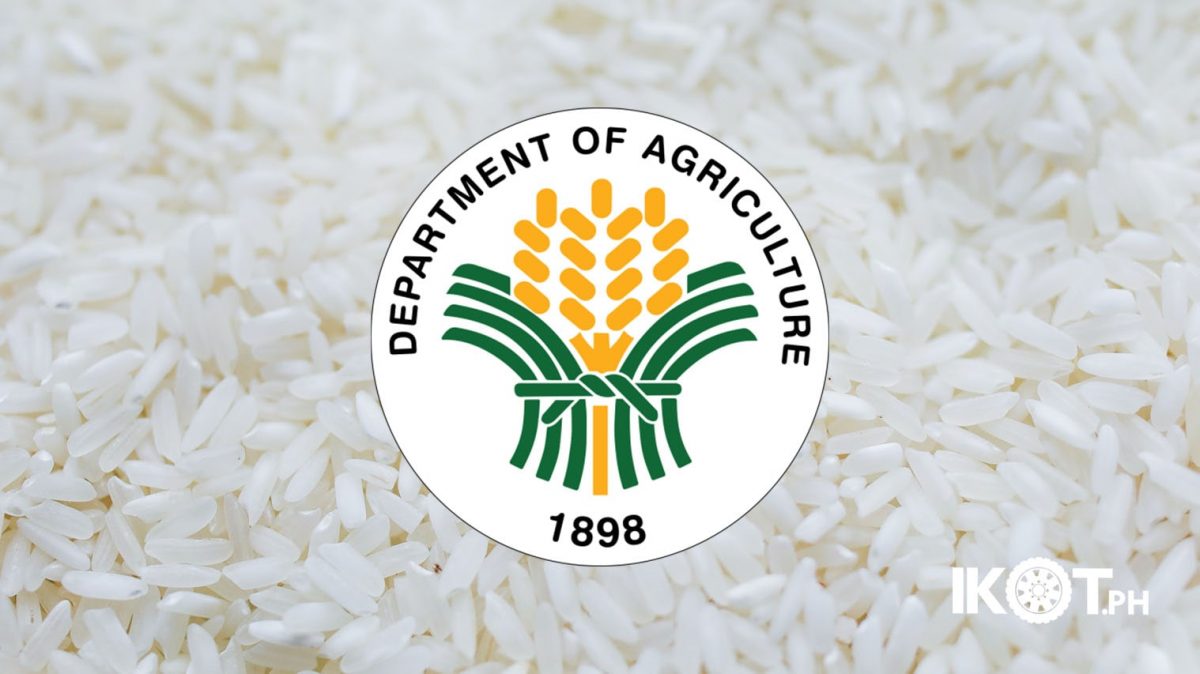The Department of Agriculture (DA) reiterated that the country’s rice supply remains stable amid the growing public concern of rice shortage and price increase due to the looming El Niño.
The Philippine Atmospheric, Geophysical, and Astronomical Services Administration (PAGASA) announced the possibility of an El Niño Southern Oscillation (ENSO) happening during the third quarter of 2023 until 2024.
“The ending stock of palay for the first quarter of 2023, which is about 5.66 million metric tons (MT), is good for 51 days.”
While the El Niño Watch raised concerns on rice sufficiency in the Philippines, a study by the DA – National Rice Program (NRP) estimated that the ending stock of palay for the first quarter of 2023, which is about 5.66 million metric tons (MT), is good for 51 days.
This consists of 1.77 million MT of beginning stock, 3.12 million MT of locally produced rice, and 774,050.44 MT of imported rice, which was based on the Bureau of Custom (BOC)’s import arrivals as of March 16 and the DA – Bureau of Plant Industry (DA-BPI)’s arrival report as of March 23.
A surge in the estimated rice supply is also expected upon incorporation of the harvests in March and April.
“Ma-sustain dapat natin ang pangangailangan ng ating bansa, which is pegged at 37,000 metric tons a day,” said Assistant Secretary and Deputy Spokesperson Rex Estoperez.
On the other hand, farmgate prices for fresh and dry palay as of April 3 were at P17.98 and P21.07 per kilo, respectively.
Both experienced an increase as compared to the previous month’s record—P17.29 per kilo of fresh palay and P19.23 for a kilo of dry palay.
From March 3 to April 3, Metro Manila market prices for locally produced special rice remained at P54 per kilo. Well-milled and regular milled rice experienced a 3.65 and 2.77 percent price increase, while premium rice was sold for a lower price at P44.50 per kilogram.
“A price increase might happen depending on any situational changes.”
While the dry season provides better conditions for drying newly harvested palay, the DA said that a price increase might happen depending on any situational changes—for instance, the added value due to the high quality of dry palay.
“Tingnan natin siguro itong El Niño [kung magtataas ng presyo]. Baka tayo naman sa national government, ma-address natin ‘yon based on the supply so baka hindi rin matuloy kasi projection nga. Pero tingnan din natin, we have to look at the consumers also,” Estoperez said.
In preparation for the El Niño phenomenon, the DA has been providing strengthened and readily available irrigation services, targeting 1.5 million hectares of well-irrigated areas in partnership with the National Irrigation Administration (NIA).
Fertilizer bags will also be purchased by the DA for distribution among farmers’ cooperatives and associations (FCAs) under the clustering and consolidation approach to boost rice production in the country.
The Department is also prepared and resolved to thwart agricultural smugglers and hoarders through intensified inspections by the DA – Inspectorate and Enforcement (DA IE) in coordination with the Bureau of Customs (BOC), Philippine Coast Guard (PCG), and other agencies.
The DA also reactivated its National El Niño Task Force and will enforce its enhanced El Niño Mitigation and Adaptation Plan, to include interventions such as cloud seeding over the watersheds of affected reservoirs, provision of production support for crops, livestock and fisheries sub-sectors from pre- to post-El Niño, conduct of information campaigns geared towards water conservation and active community participation, and reinforced coordination with the PAGASA, NIA, Office of Civil Defense (OCD), DA RFOs, and other concerned agencies.
The DA seeks 100 percent rice self-sufficiency by 2027 through its Masagana Rice Program 2023-2028.
The said program aims to stabilize the country’s rice supply to 24.99 to 26.86 million MT, lower rice inflation to less than 1 percent annually, increase farmers’ income by 54 percent, and ensure rice availability and safety at all times by maintaining sufficient rice buffer stock at the DA – National Food Authority (NFA) as mandated by the Republic Act No. 11203 or the Rice Tariffication Law.
To achieve the stated goals, the DA shall implement four key strategies: climate change adaptation, farm clustering and consolidation to promote convergence of interventions; value chain approach; and digital transformation of the Philippine rice industry.


